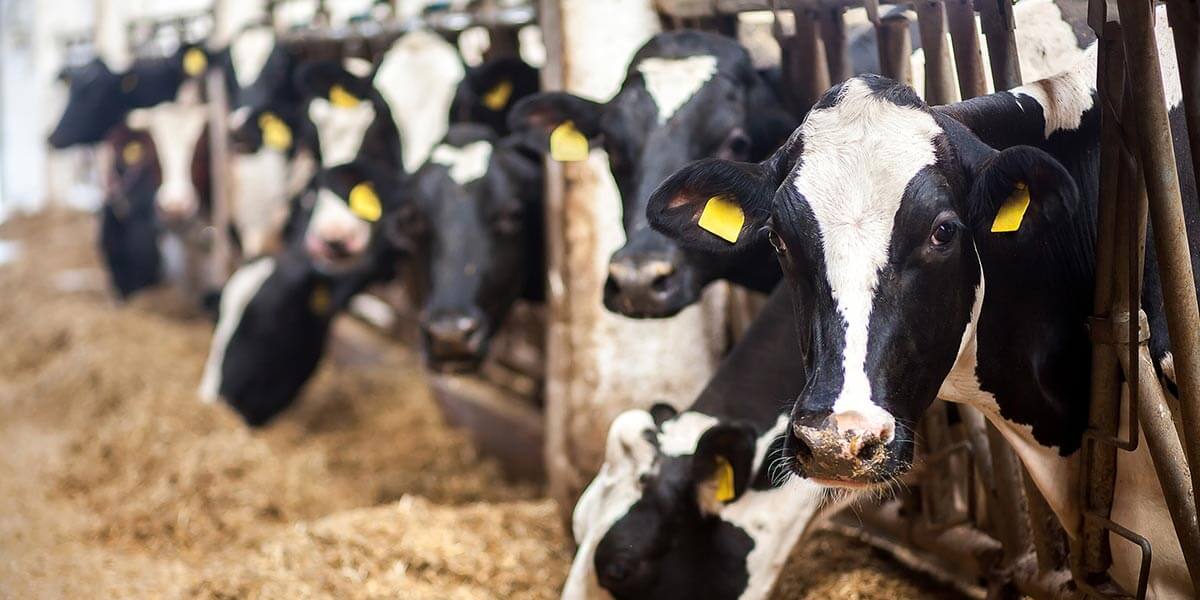Elevated somatic cell count often occurs on-farm and is an indicator of animal performance and milk quality. Mastitis is inflammation of the mammary gland, and the resulting increase in somatic cell count is caused by immune cells being recruited to the mammary gland to help deal with that inflammation.
We know from previous blog articles that any inflammation in the mammary gland will result in a reduction of milk quantity and quality for a dairy cow, but the impact doesn’t stop there. Mastitis and high somatic cell count can also reduce reproductive performance and cause issues with lameness in dairy cows.
The dry period and early lactation are kind of the hotspots for cases of mastitis in dairy cows. Early lactation is the time period when cows are in a negative energy balance and a nutrient drain is most detrimental.
At 21 days pre-calving, a cow has a glucose supply of about 1,700 grams per day with a demand of 1,000 grams per day. By 3 weeks post-calving, however, a cow will have a demand of 2,500 grams per day with a supply of only 2,000 grams per day. When you add on inflammatory responses to mastitis and lameness, this will cause the cow to start metabolizing bodyweight and drive milk production down even further as nutrient supply is drained.
This is largely due to the fact that the immune cells that are recruited for the inflammatory process – especially the neutrophils – are big glucose consumers. Cows can utilize up to 2 kg of glucose per day to fuel an inflammatory response, including one that is repairing epithelial tissue. In addition to utilizing glucose, lymphocytes utilize amino acids as a nutrient source, which can potentially cause a protein deficiency.
High Somatic Cell Count Drives Down Milk Yield
Milk yield can take a hit when somatic cell counts reach a level as low as 100,000 – well below the threshold deemed acceptable for milk processors and supermarkets. Dr. Stephen Nickerson from the University of Georgia Department of Animal and Dairy Science has shown that at a somatic cell count of 100,000, dairy cows may be losing up to 3% of their milk yield. Somatic cell counts that reach 1 million can diminish milk yield by as much as 12% and will produce milk not acceptable for sale.
There are two primary drivers of milk production: mammary cell number and mammary cell activity. If there is a decrease in mammary cell number because the cows don’t have adequate nutrients to allow for their replacement, then they will not have the necessary mammary cell capacity to produce milk. Additionally, if an immune response is pulling glucose away from those cells, it will inhibit the production of lactose, which is the primary osmoregulatory of milk, resulting in a further loss of milk yield due to decreased mammary cell activity.
As this inflammation becomes more severe, so does the damage to the epithelial tissue in the mammary gland, which will begin to break down. Then, cows will have lactose that has already been synthesized leak back into the blood. This is a situation where these nutrients aren’t necessarily being utilized elsewhere in the body, but rather just being lost.
Mastitis and Lameness Lead to Reduced Reproductive Performance
Mastitis and high somatic cell count can ultimately lead to weaker reproductive performance. Just like the cells in the mammary gland, the cells in the reproductive tract and follicles in the ovaries are big glucose users. Since reproduction is one of the lowest nutrient utilization priorities for a dairy cow, high somatic cell counts drive down a cow’s reproductive performance.
Interestingly, a study in 2009 sought to show how two cumulative nutrient drains (heightened somatic cell count and lameness) would impact reproductive performance. When they looked at healthy cows, about 90% of them were ovulating and had appropriate reproductive performance, meaning they were eligible to be bred. In lame cows, that number dropped to around 75%. In cows that were lame and had high somatic cell count, only 44% of them were ovulating. Since both the mammary gland and hooves are known glucose users during times of stress/inflammation, this study accurately showed how these stressors can cumulatively drain nutrients and ultimately drive down performance – reproductive performance in this case.
Manage Mammary Inflammation with Zinc
Zinc is a critical component to improving mammary health, managing lameness and boosting dairy cow reproduction. Read more in this blog article for tips on managing mastitis in dairy cows.
For more information about making performance trace minerals a part of your mastitis mitigation strategy, contact your Zinpro representative today.

